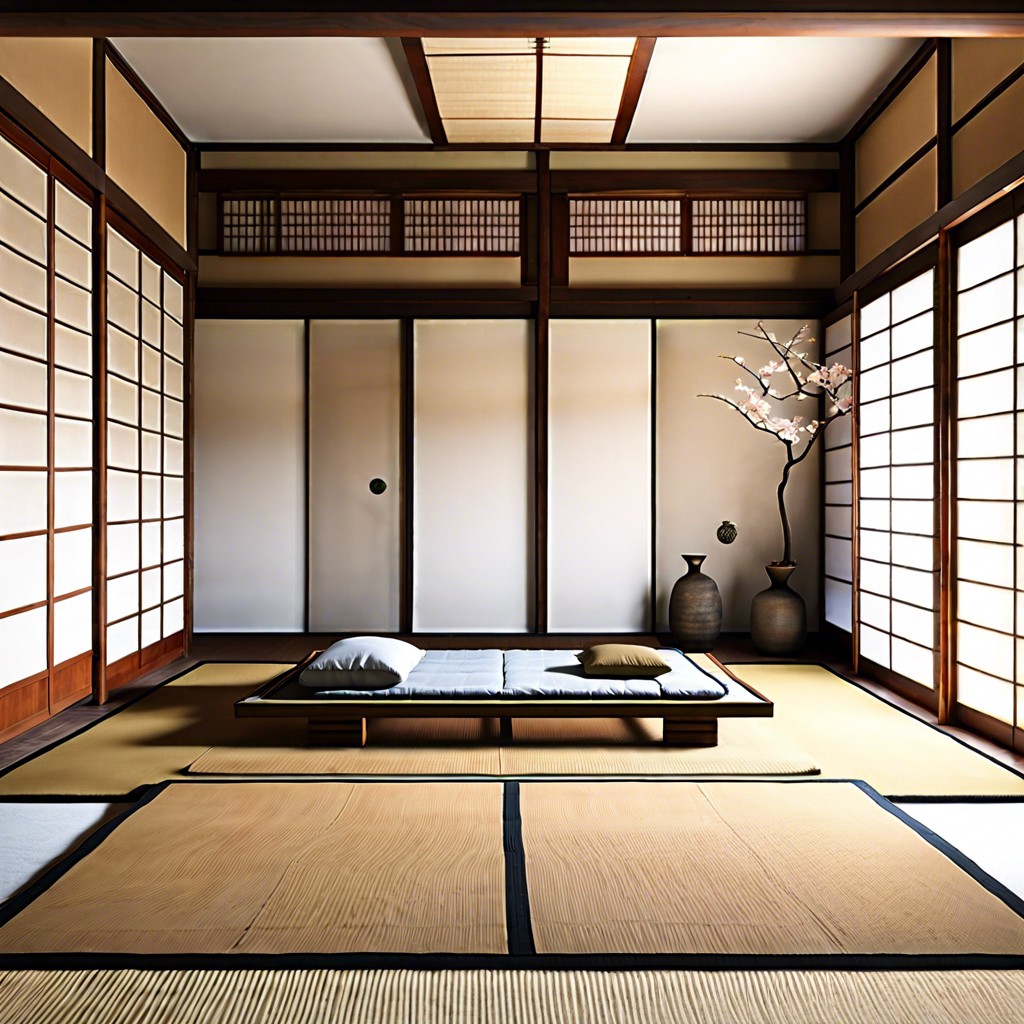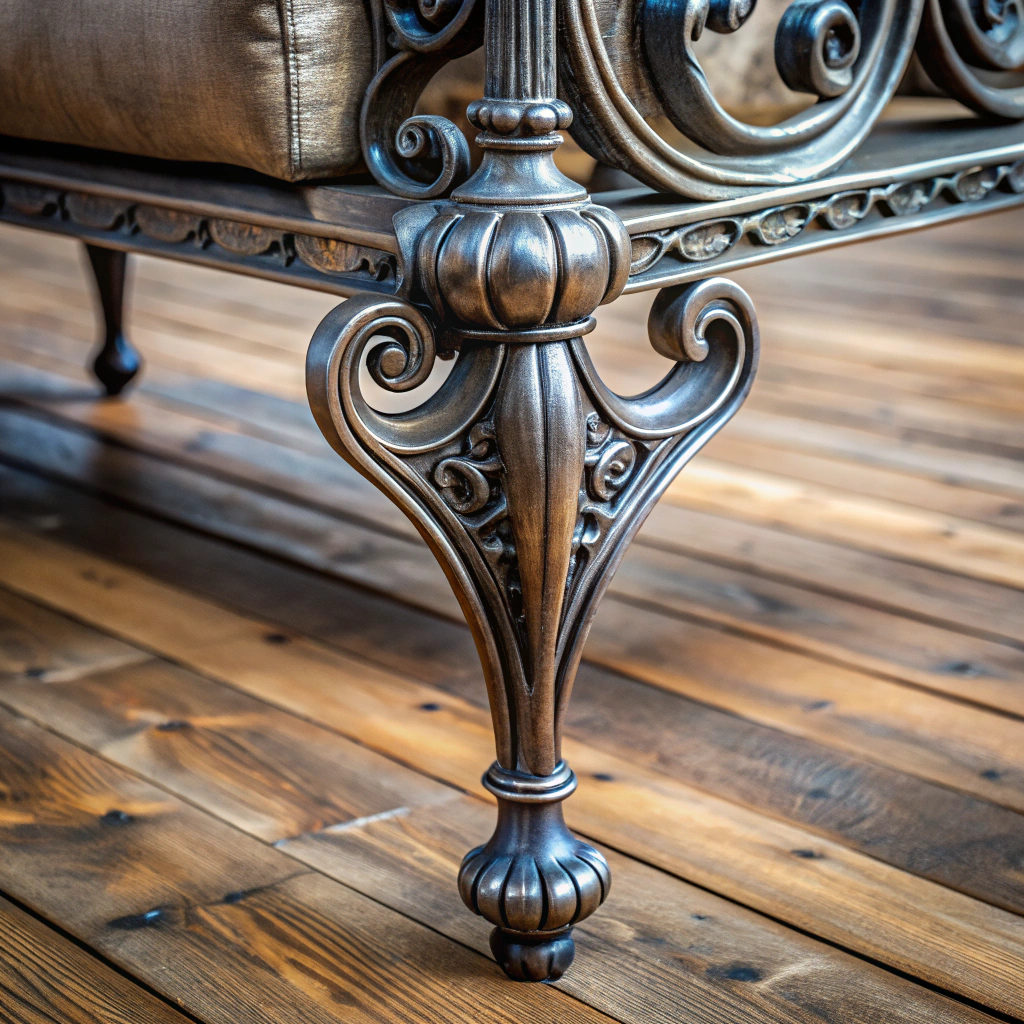Last updated on
Discover the multifunctional simplicity of a futon, a versatile piece of furniture that seamlessly blends comfort with convenience for sitting and sleeping.
Key takeaways:
- Futons are versatile, serving as both a bed and a couch.
- Futons originated from Japan and adapted in the West.
- Futon components include frame, mattress, and cover.
- Futons offer affordability, convenience, and easy maintenance.
- Consider size, primary use, style, and ease of conversion when choosing a futon.
Table of Contents
Definition of a Futon

A futon serves as a versatile piece of furniture that can double as both a bed and a couch. Originating from Japan, the traditional futon consists of a padded mattress called a “shikibuton,” a quilted bedcover known as a “kakebuton,” and a pillow filled with beans, called a “makura.” Over time, the Western adaptation has integrated a foldable frame, which enables the futon to be easily converted from a flat sleeping surface into a seated position, akin to a sofa bed. The Western-style futon typically features a thick, tufted mattress that sits atop a metal or wooden frame. Its design caters to the needs of small living spaces, representing practicality and simplicity.
Origins and History
Tracing back to Japan, the futon’s roots are deeply entrenched in traditional Japanese bedding practices. It was designed to be a space-saving solution that could be easily rolled up and stored away during the day, allowing for multifunctional use of the living space. This concept became particularly important in the context of small Japanese homes, where maximizing the use of available space was essential.
Introduced to the Western world in the 1970s, the futon underwent a transformation. In the West, it became a low-slung, adjustable couch-bed hybrid, often with a foldable frame that allows for an easy transition between a sofa and a bed. This adaptation made the futon a popular choice for guest rooms, studio apartments, and dormitories due to its versatility and functionality.
Over time, the materials used in futons have expanded from the traditional cotton batting to include options like foam and innerspring mattresses, reflecting a fusion of Eastern and Western preferences for comfort and support. As the futon evolved, so did its uses and designs, leading to a diverse range of styles suitable for various interior decors and personal preferences.
Components of a Futon
Futons are versatile pieces of furniture that consist of two primary parts: the frame and the mattress. The frame can be made from various materials such as wood, metal, or a combination of both, designed to be easily convertible from a sofa to a bed. This flexibility allows for dual-functionality, serving as both seating and sleeping furniture.
The mattress sits atop the frame and is typically filled with layers of materials like cotton, foam, or innerspring coils, offering varying levels of support and comfort. Some futon mattresses are designed with tufts to keep the filling evenly distributed and to retain the shape over time.
Futon covers are common accessories that provide an opportunity to personalize the futon’s appearance and protect the mattress from wear and tear. These covers are available in a plethora of colors and patterns, and are often removable for easy washing.
Lastly, additional elements such as grips or latches may be integrated into the frame mechanism to ensure the stability of the futon in both sofa and bed configurations, enhancing its practicality and user safety. Understanding these components will aid in making an informed decision when selecting a futon for your living space.
Benefits of Owning a Futon
Futons offer versatility; they easily convert from a sofa into a bed, making them ideal for small living spaces or for offering a guest bed without dedicating an entire room. The adaptability extends to design as well, with a variety of frames and mattresses available to match decor preferences.
They are often more affordable than purchasing a sofa and bed separately. This cost-effectiveness, coupled with their dual purpose, provides significant value, especially for those on a tighter budget or furnishing a temporary living situation.
In terms of maintenance, futons are relatively simple to care for. Many come with removable covers that are machine-washable, which is a boon for cleanliness and for those with allergies. The ability to replace the cover also allows for an update in aesthetics without the need to invest in new furniture.
When it comes to moving, futons are typically lighter and less cumbersome than traditional sofas or bed frames, which simplifies the process. This is an especially attractive quality for renters or anyone who anticipates frequent moves.
For those conscious about sustainable living, futons can be a more environmentally friendly choice. Their multifunctionality means fewer pieces of furniture are needed, inherently reducing material consumption. Plus, the simple design often leads to a longer lifespan, as the straightforward mechanism is less prone to failure than more complex folding couches.
Choosing the Right Futon for Your Space
When selecting a futon, consider the size of the room to ensure a good fit without overcrowding the space. Measure the area where the futon will go, both as a sofa and when extended as a bed, to avoid any surprises.
Take into account the primary use of the futon; if it’s for daily sleeping, invest in a thicker mattress for greater comfort. For occasional guest use, a standard thickness may suffice.
The frame’s material impacts both aesthetics and durability. A wooden frame typically offers a warm, traditional look and is sturdy, while metal frames are sleek, modern, and sometimes lighter for easier moving.
The style of futon should complement your existing decor. From minimalist designs to those with elaborate armrests and side panels, there’s a variety of options to match your taste.
Lastly, consider the futon’s ease of conversion. If it will be switched from sofa to bed frequently, look for a user-friendly mechanism that can be operated smoothly and efficiently.




